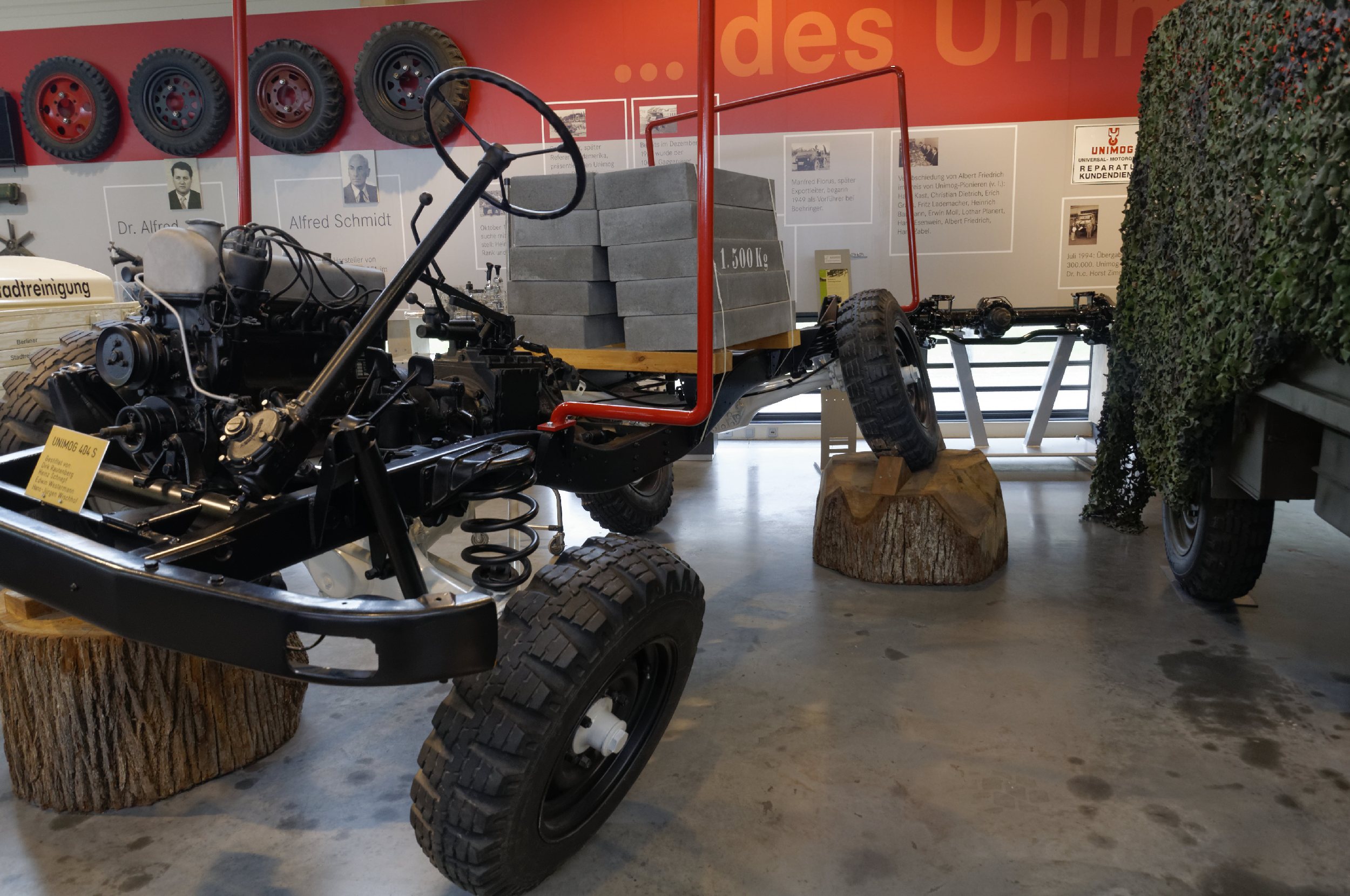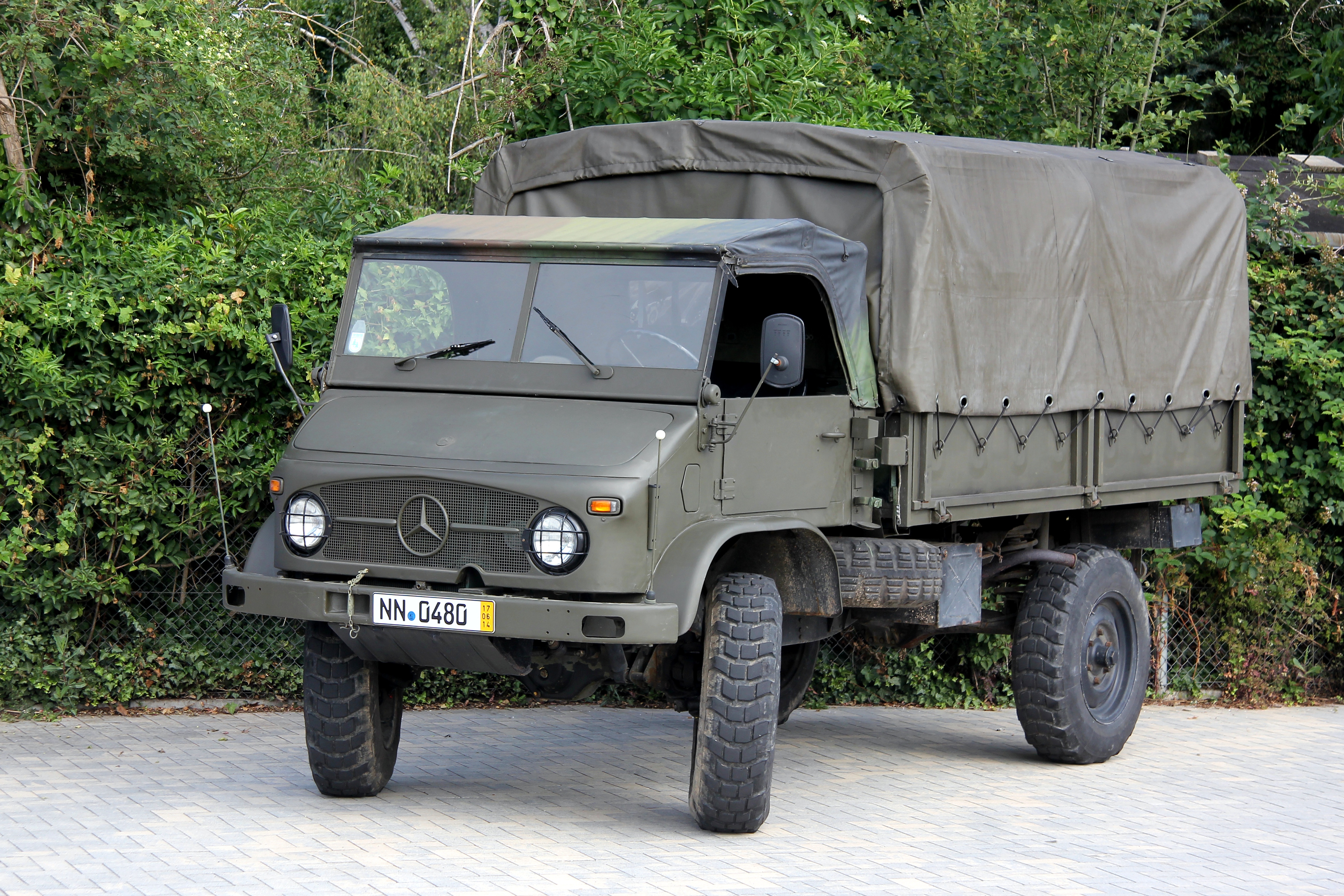Unimog 404 on:
[Wikipedia]
[Google]
[Amazon]
The Unimog 404, also called the Unimog S and Unimog 404 S, is a vehicle of the 

 The Unimog 404 is a small four-wheel offroad capable truck designed for a payload of . Like other Unimogs, it has a ladder frame, two
The Unimog 404 is a small four-wheel offroad capable truck designed for a payload of . Like other Unimogs, it has a ladder frame, two 
Unimog
The Unimog (, ) is a range of multi-purpose tractors, trucks and lorries that has been produced by Boehringer from 1948 until 1951, and by Daimler Truck (formerly Daimler-Benz, DaimlerChrysler and Daimler AG) since 1951. In the United States and ...
-series by Mercedes-Benz
Mercedes-Benz (), commonly referred to as Mercedes and sometimes as Benz, is a German luxury and commercial vehicle automotive brand established in 1926. Mercedes-Benz AG (a Mercedes-Benz Group subsidiary established in 2019) is headquartere ...
, produced in the Unimog plant in Gaggenau
Gaggenau is a town in the district of Rastatt, in Baden-Württemberg, Germany. It is located some 8 km northeast of Baden-Baden.
History
Gaggenau was first mentioned in local records in 1243 under the name "Gaggenaw". The present district ...
from 1955 to 1980. Marketed as ''Unimog U82'', and later ''Unimog U110'', 64,242 units of the two Unimog 404 types ''404.0'' and ''404.1'' were built, which makes the 404 the Unimog model with the highest production figure of all Unimogs. Unlike the Unimog 401, the 404 is rather a small 1.5-tonne-offroad-truck than an agricultural vehicle. In Germany, it was a common military vehicle and fire engine, 36,000 Unimog 404 were made for the Bundeswehr
The ''Bundeswehr'' (, meaning literally: ''Federal Defence'') is the armed forces of the Federal Republic of Germany. The ''Bundeswehr'' is divided into a military part (armed forces or ''Streitkräfte'') and a civil part, the military part con ...
.
The first Unimog 404 concept-vehicle was made in 1953 and was slightly smaller than the series production model, it had a track width of and a wheelbase of . Two prototypes for the French army followed in 1954, the first 1,100 series production models were also purchased by the French army. Since the French army did not want the spare wheel to occupy space for soldiers on the bed, the Daimler-Benz engineers decided to build the Unimog 404 with a downswept frame so the spare wheel could be mounted underneath the bed. This constructional feature also allowed more torsional flexing and, therefore, improved the offroad capabilities of the Unimog. Later, the downswept frame became a key constructional feature for the following Unimog types.Carl-Heinz Vogler: ″UNIMOG 406 – Typengeschichte und Technik. Geramond. München. 2016. . Page 45. (In German)
At its introduction in 1955, the Unimog ''404.1'' was available as the wheelbase model with the Otto engine
The Otto engine was a large stationary single-cylinder internal combustion four-stroke engine designed by the German Nicolaus Otto. It was a low-RPM machine, and only fired every other stroke due to the Otto cycle, also designed by Otto.
Types ...
M 180 producing . In 1956, the wheelbase model of the ''404.1'' followed, available with the same engine. Both were sold as ''Unimog U82''. The production of the U82 with the short wheelbase was stopped in 1971, while the long wheelbase model was built until 1980. Starting from 1971, the Unimog ''404.0'', sold as ''Unimog U110'', was offered. It was fitted with the cab of the Unimog 406 and soon afterwards, with the model 404.012, it received the M 130 engine. However, only 1,791 ''404.0'' were made. Also, 81 Unimog 404 were made with the diesel engine OM 615 () for the Portuguese market.

Technical description

portal axle
Portal axles (or portal gear lifts) are an off-road vehicle suspension and drive technology where the axle tube or the half-shaft is off-set from – usually above – the center of the wheel hub and where driving power is transferred to each whe ...
s with reduction gears and coil spring
A selection of conical coil springs
The most common type of spring is the coil spring, which is made out of a long piece of metal that is wound around itself.
Coil springs were in use in Roman times, evidence of this can be found in bronze Fib ...
s with hydraulic shock absorbers
A shock absorber or damper is a mechanical or hydraulic device designed to absorb and damp shock impulses. It does this by converting the kinetic energy of the shock into another form of energy (typically heat) which is then dissipated. Most sh ...
for the rear and front axle. All four wheels and tyres have the same size and are fitted with hydraulic ''ATE'' drum brake
A drum brake is a brake that uses friction caused by a set of shoes or pads that press outward against a rotating cylinder-shaped part called a brake drum.
The term ''drum brake'' usually means a brake in which shoes press on the inner surfac ...
s. The 404 is a rear-wheel-drive vehicle with switchable all-wheel-drive and additional differential lock
A locking differential is a mechanical component, commonly used in vehicles, designed to overcome the chief limitation of a standard open differential by essentially "locking" both wheels on an axle together as if on a common shaft. This forces ...
s.
A water-cooled straight-six Otto engine
The Otto engine was a large stationary single-cylinder internal combustion four-stroke engine designed by the German Nicolaus Otto. It was a low-RPM machine, and only fired every other stroke due to the Otto cycle, also designed by Otto.
Types ...
, type ''M 180 II-U'', displacing powers the 404.1. It is fitted with a Zenith 32 NDIX offroad-carburettor
A carburetor (also spelled carburettor) is a device used by an internal combustion engine to control and mix air and fuel entering the engine. The primary method of adding fuel to the intake air is through the venturi tube in the main meterin ...
and transmits the torque to a fully synchronised manual Daimler-Benz-six-speed-gearbox with two additional reverse gears. As clutch
A clutch is a mechanical device that engages and disengages power transmission, especially from a drive shaft to a driven shaft. In the simplest application, clutches connect and disconnect two rotating shafts (drive shafts or line shafts). ...
, the ''Fichtel & Sachs K 16 Z'' single-disc-dry-clutch is used.
The 404 was available both with a standard closed two-door-cab and as a two-door-cabriolet with a convertible top. The 404.1 has a divided windscreen, while the 404.0 with the cab of the Unimog model 406 has a single windscreen. Only the standard cab models have side windows in the doors. Special purpose vehicles, such as fire engines, were also made with an extended four-door-cab.

Overview of the 404-series
Technical data
Bibliography
*Carl-Heinz Vogler: ''Typenatlas Unimog. Alle Unimog-Klassiker seit 1946 bis 1993.'' GeraMond, München 2015, , S. 41 ff.References
{{Unimog Mercedes-Benz vehicles Military trucks Mercedes-Benz trucks